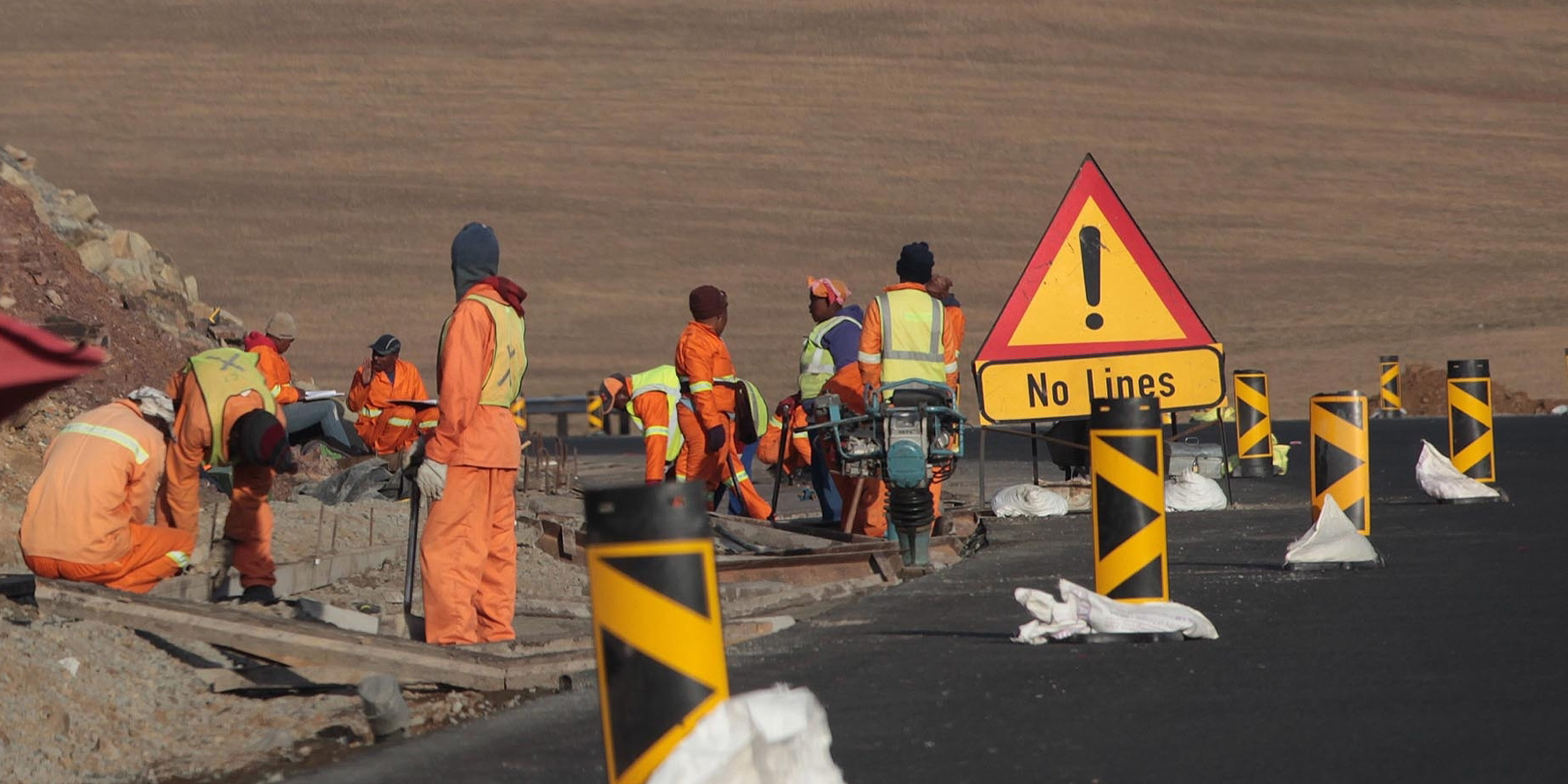Sanral is responsible for South Africa’s national road network – any road with an N in its name as well as some provincial and regional roads. In total, it’s about 23,500km of roads, including a whole bunch of toll roads and some concessions, notably the Platinum Highway, the Maputo Corridor and the N3 toll concession.
The toll roads, about 14% of the total, are supposed to be self-funding and the rest are funded by the Department of Transport, its sole shareholder, with one huge transfer of around R21-billion a year from the fiscus.
There are a lot of roads with enormous pothole problems, but these are usually the province of the provinces. Sanral’s roads are mostly pretty well maintained, and it estimates only about 100km of its roads are in a “very poor” condition, with 10% of its roads being in a poor condition. The rest they characterise as fair to very good.
The news in the past about Sanral was focused on the battle between Outa, the Organisation Undoing Tax Abuse, and the Gauteng e-toll system. But more recently, a new battle has opened up over a new BEE scoring system.
It goes without saying that road-building is a crucial part of a construction company’s business. So, to participate in road construction, construction companies jumped through all kinds of difficult and expensive hoops to comply. And for years, this has been more or less operating without major hitches.
But there was recently a change in management at Sanral and the new managers decided to change the BEE scoring system. Surprise! Previously, the system was operated in terms of the Preferential Procurement Policy Framework Act and regulations that set out how that system works. Under the Act, 20% of the points available are awarded on a BEE equity-ownership basis for small projects and 10% for large projects. A Level-1 operator, the highest ranking, would get the full 20 points for tenders up to R50-million, and the full 10 points for projects over R50-million.
These regulations were agreed upon a long time ago with the construction industry, and are generally a workable compromise between the financial demands of the construction business and government’s BEE requirements. This is mainly because Level-1 BEE status is possible with a 25% black ownership. That is low enough to be financially feasible and high enough to be meaningful.
But for the new management, this wasn’t good enough.
They changed the rules so that the BEE allocation would only be granted if equity ownership was over 50%.
This demand makes the whole system unworkable because it effectively means the profitability of road construction for the construction company has to be enormous for the project to be viable.
It’s very similar to the debates that are taking place in the mining industry about the “once empowered, always empowered” system. And, by the way, this very intense level of BEE requirements is what Eskom imposed way back, and which, I suspect, is at least one of the reasons for load shedding.
So, what has happened is that two engineering construction companies, H&I Construction and Wilson Bayly Holmes-Ovcon (WBHO), have taken Sanral to court to challenge the board’s new scoring system on tenders. The case is still pending.
So now, as with Eskom before it and many other examples, the rot is beginning to set in and talented staff are leaving or being ejected if they raise objections to the unworkable ideological predilections of their politically appointed overseers who often know absolutely nothing about the job at hand.
Sanral’s chief financial officer, Inge Mulder, and the head of supply chain management, Inba Thumbiran, have been suspended.
Sanral now claims these suspensions have nothing to do with the new, impractical and financially unfeasible BEE regulations. They result from a different issue.
The Sanral board decided, in its deep wisdom, that a company designing the tenders is not allowed to adjudicate bids. The Sanral board claimed that doing so would be a conflict of interest, but in most circumstances, you would want the technical knowledge of the designer of the project to be front and centre of the bid adjudication process. Obvs.
How suspicious should we be about this?
On historical evidence, pretty suspicious. Particularly since three Sanral megaprojects, which were reversed after the outrage of the bid designers being part of the adjudication process, have now been granted to Chinese construction companies. This includes a hugely expensive bridge in the former Transkei which goes from nowhere to nowhere. But it is big.
The battle within Sanral is a familiar one in SA at the moment.
The political appointees of parastatals think they have only one job: Transformation. The industry tries to demonstrate they are in favour of transformation as long as financial and technical feasibility are not tossed out of the window in the process. The ideologues claim this is just “resistance” to transformation – and double down. With the impasse, huge projects simply don’t happen.
Paging through Sanral’s most recent annual report, there is one very revealing statistic: the total infrastructure budget for the 2022 financial year was R34.2-billion. That's much more than its budget from government, but their was a big rollover from the previous year partly, I presume partly because of the Covid pandemic but also because of disputes about the tender process. How much did it spend? As it happens, R7.2-billion.
QED. No wonder SA’s roads are such a mess. SANRAL's response to this article is below in full. DM
*Story corrected to reflect Sanral's total road responsibility is in fact 23,500km of roads, and the correct infrastructure budget.
Business Maverick
After the Bell: The Sanral dispute - a decoder





